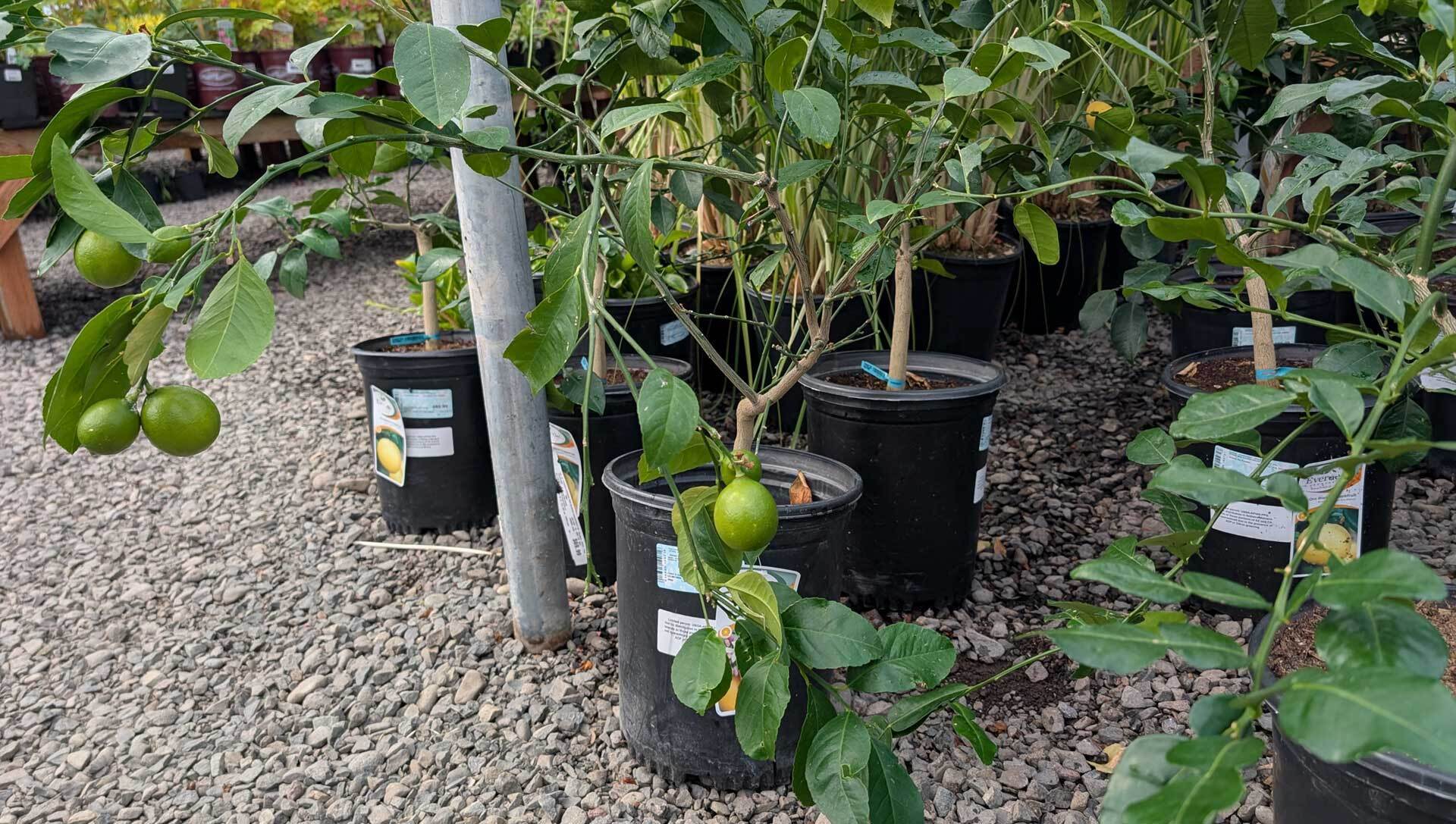We may earn a commission from links on this page.
Every year around this time, I prepare to move my living room lemon tree outside for the season. In the fall, when temperatures drop below 40 degrees overnight, Daisy (yes, she has a name) gets rolled into my living room, where she winters under a grow light, and then as soon as the overnight temperatures stabilize in spring, back out she goes to live on the patio. Since I live in the Pacific Northwest, this is the only way to keep a lemon tree; they simply aren’t built to withstand a real winter outside. But, even if you are unwilling or unable to host your trees inside your home or greenhouse over the winter, you may still be able to turn your patio into a mini orchard.
Generally, when you buy trees or shrubs, you plant them in the ground, and the expectation is that these plants will grow to get quite large. But if you don’t have the room to plant a large tree or shrub, you can consider getting a tree or shrub small enough to remain in a pot. Smaller and smaller dwarf type trees and shrubs are being cultivated all the time, and regardless of what kind of fruit you like, it is almost guaranteed that there will be a variety that is small or micro enough to remain in a pot.
Credit: Amanda Blum
These potted plants, which should remain under six feet, can live on your patio, so long as they get enough sunlight, water and heat in the summer. In fact, your patio can provide the opportunity to better control the environment for your potted plant. You can provide shelter from storms, control the moisture level to help prevent disease, and move it around if the original location doesn’t suit it.
At least for spring and summer, you and your micro trees should be very happy on your patio. The problem comes in winter. When you purchase plants you should always pay attention to their winter hardiness rating. For instance, cacti can’t survive a cold winter outside, but a pine tree has no issue. Plants generally go dormant over the winter, which means they focus on root growth, and not leafing, fruiting, or flowering. These small trees and shrubs are particularly vulnerable, since their roots are not in the ground, but a pot, so they lack the insulation the ground can offer.
The first way to ameliorate the winter hardiness issue is to bring your plants into a greenhouse during winter—that’s what nurseries do. Of course, most people (including me) lack a greenhouse. The second best option is a spot in your home where the plant will be able to get enough light, water, and heat to survive the winter. Since your home is inevitably heated enough for the temperatures to remain above forty degrees at night, your tree is fine. Remaining situated near a window or under a grow light is sufficient for these plants. A third location might be the garage, or another unheated building, because even though temperatures will drop below forty degrees, if they consistently stay between 20 and 40, the plant will remain dormant, isn’t exposed to wind or freeze, and should be able to survive. Just because the plant is dormant doesn’t mean it won’t require care; you’ll need to check moisture levels every few weeks. You can’t allow the soil in the pot to get too dry.
Credit: Amanda Blum
If you can’t bring your plants inside, you’ll need to find ways to insulate them outside, and you have a few options. Remember, the walls of your home provide some shield from the wind, and give off some heat, so relocating the plant next to the wall is a good start. You can create a cage around the plant using chicken wire and fill the cage with straw. The straw provides the insulation, while allowing for air flow, and the straw is unlikely to transmit disease or virus to the plant. You can also mound up compost or wood chips around the pot itself; this will recreate the insulation the ground offers to protect the roots. You can even purchase tree blankets, which provide a layer of breathable insulation. The thing to remember is that, like a blanket, this insulation only helps temper the winter conditions, not ameliorate them. For some trees, like citrus, this simply may not be enough warmth. For that reason, choose your patio fruit carefully, depending on what growing zone you live in and whether you have the ability to make these plants your roommates over winter. There are very winter-hardy citrus now, but you might be better suited to a patio blueberry or apple.
If your plants are going to live outdoors, you’ll want to choose a heavy ceramic or concrete planter—one that provides some insulation from the cold. But if your plant is moving indoors with you all winter, you may be impressed by how good-looking plastic planters have become. Modern, self-watering, and—most importantly—light, they can make moving your patio tree indoors and out a lot easier.
To find the right variety tree or shrub for your yard, you should start with a local nursery. However, don’t be afraid to buy a plant that will be shipped to you; I’m constantly surfing through the One Green World catalog, because they carry varieties of cold hardy trees my local nursery doesn’t.
